With an opulent castle seemingly on every hilltop, excellent food, and world-class wines, the Loire Valley understandably captivates visitors. But there’s more to the region than its history of extravagant nobility and their sprawling palaces, or “châteaux”. The region is also home to nature reserves, rivers, and forests. By e-biking or captaining your own electric boat, you can take in the sight from a less-traveled angle. These are just some of the ways to add a splash of adventure to your Loire Valley visit.
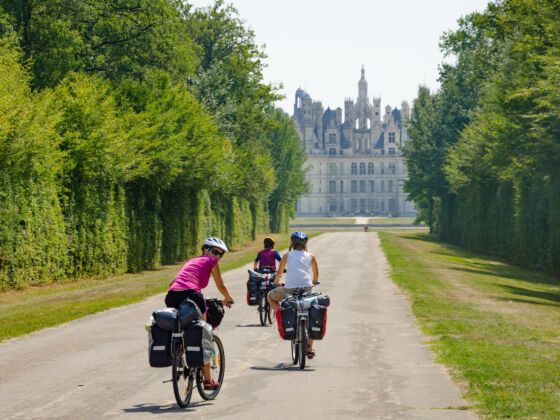
Take Your Loire Valley Visit to the Next Level With E-Boats and DIY Wine Tastings
1. Ride a bike through the Loire Valley
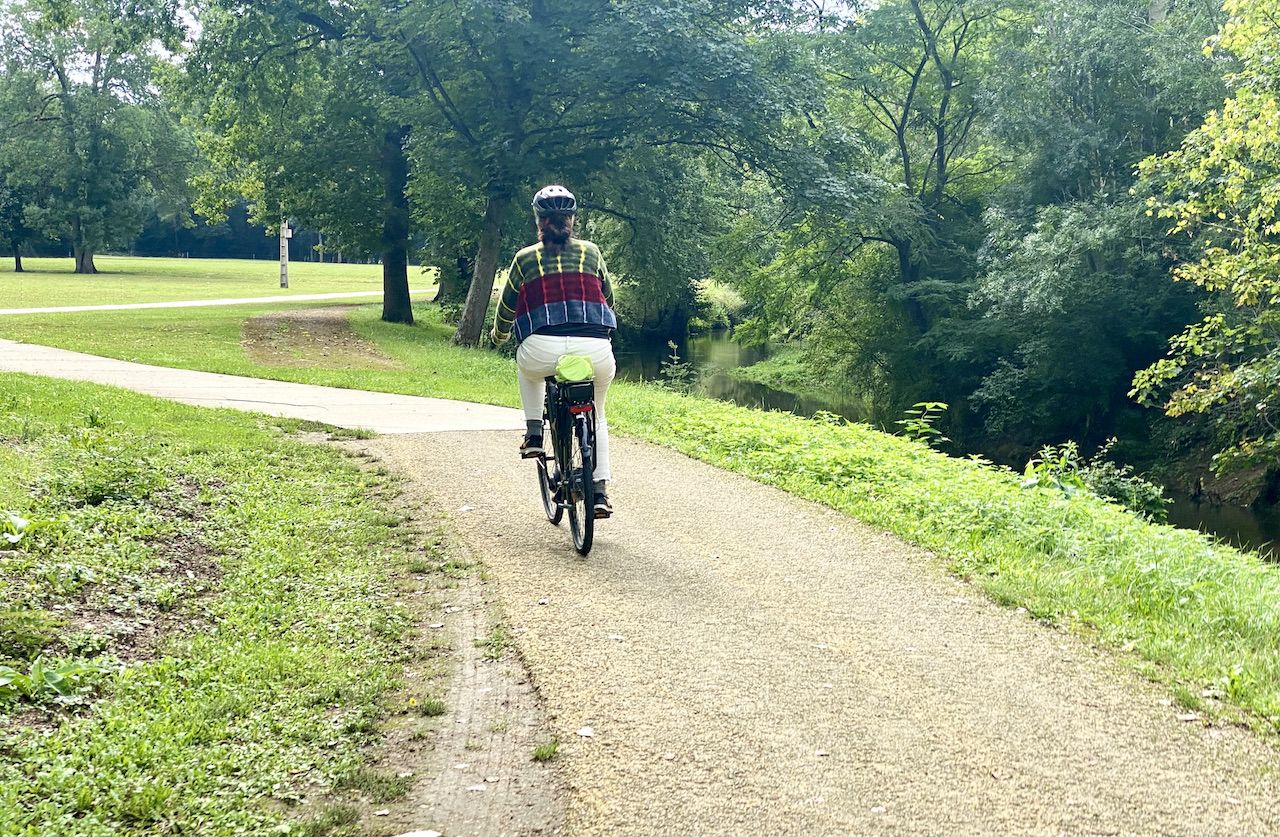
Photo: Noelle Alejandra Salmi
The Loire Valley is very bike-friendly, with rideable paths running for miles alongside rivers, across wooded parks, and through photogenic towns. Generous signage indicates the many biking routes — although you may want to consult Google Maps as a backup. On a bike trip from the town of Blois to Chaumont-sur-Loire, a friend and I took more than a few wrong turns. We were grateful for our electric bikes rented from Station Bee’s bike rentals, since the e-boost made the many wrong turns more humorous than exhausting.
The electric power, however, did not help us pedal fast enough to find cover and avoid getting absolutely soaked by afternoon rain showers. Normally, September is a dry month in the Loire Valley — and, indeed, most of our visit, including the hours before and after our bike ride, was under dry or even sunny skies.
2. Explore the Loire Valley’s Sologne wilderness
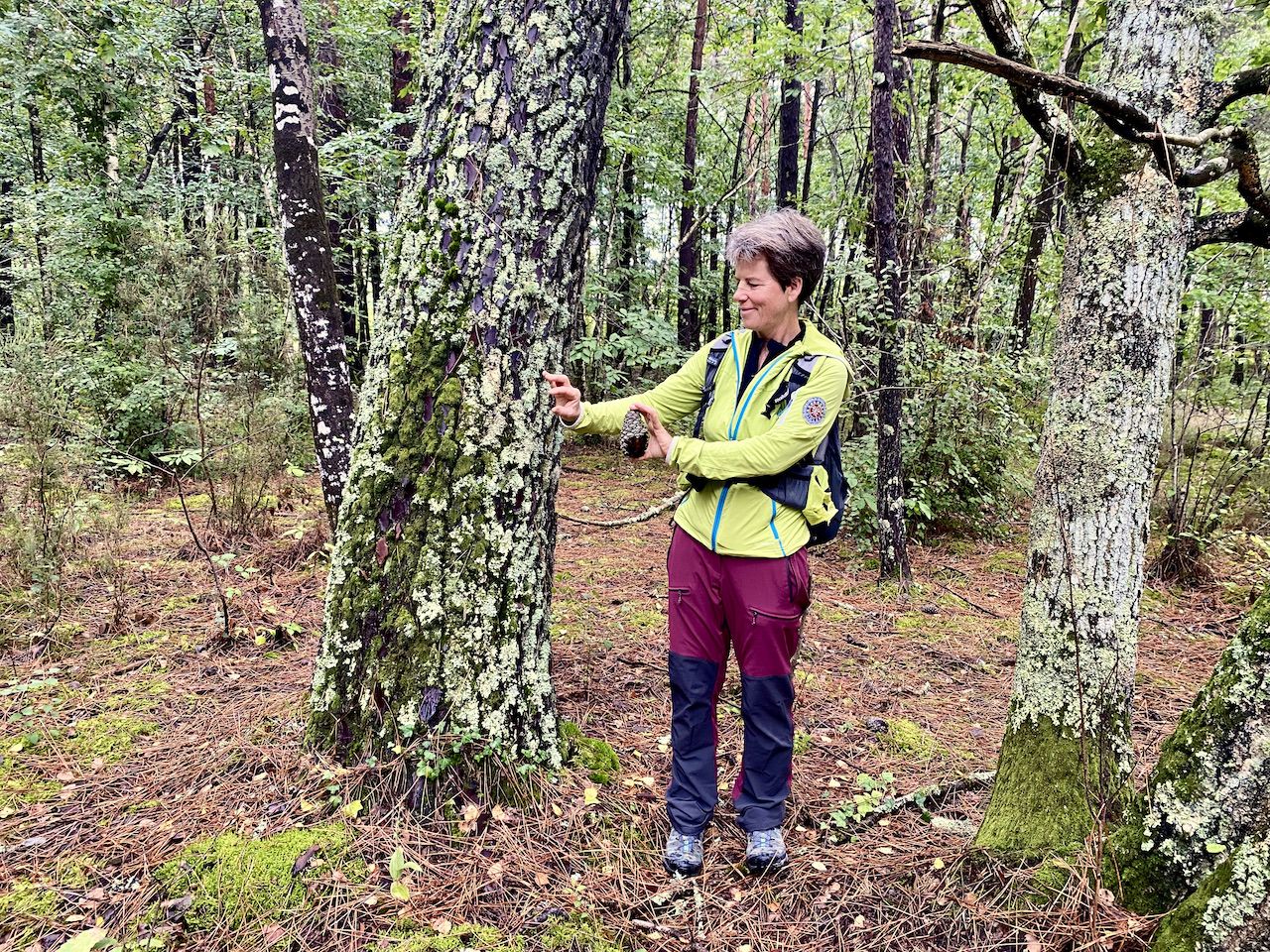
Photo: Noelle Alejandra Salmi
The 200-square-mile Sologne is a lowland region of the Loire Valley that today is part of Natura 2000, a network of natural areas. The largely private landowners of these areas are bound by rules designed to protect threatened habitats and the species that rely on them.
Royalty in France has been messing with the Sologne for centuries, planting non-native trees, among them hardy Scott’s pines, to turn this massive marshland into usable and navigable land. But perhaps the very fact that it once was a wetlands, known for its mosquitos, is what has slowed development in the Sologne and kept it wild.
Centuries ago, “It probably looked like Scotland, with turf and peat,” our guide Bernadette Vallée, who runs Walk in Sologne, told us. Today, it’s owned by old French aristocrats, area residents who buy small plots for retirement, and, said Vallee, the newly rich, not all of them French, who buy hundreds or thousands of hectares at once. “It’s a very fashionable area,” she said.
Vallée, an accredited mountaineer who is as happy in the highest peaks as in the flat and serene Sologone landscape, has encyclopedic knowledge of the area, pointing out the oak, chestnut, and maple trees, along with a smattering of poplars and willows, that preceded the imported pines. We also passed by a lake, and she explained how monks in the middle ages added drainage systems to create bodies of water and fill them with perch and carp. Beyond that, a sheep suited to the Sologne’s wet conditions was long ago introduced, less appreciated for the texture of its wool than its tasty meat.
In fact, the cuisine of the Sologne is best known for its charcuterie offerings, including sausages made from acorn-fed boar and paté made from wild boar, deer, and other game animals. Other Sologne residents that are fortunately not on the menu include red squirrels, martens, and weasels, while birds like terns, warblers, and stunning black-necked grebes abound in the trees and on the lakes.
You could bring binoculars to take in the various birds, or simply enjoy the birdsong as you hike or bike through Sologne’s many miles of trails. As we examined a sign, Vallée pointed out that the white- and red-marked trails represent multi-day hikes, while the yellow trails are hiked in a few hours.
3. Sample Loire wines like a kid in a candy shop

Photo: Noelle Alejandra Salmi
It’s hard to visit the Loire Valley without checking out the Château de Chambord, if for no other reason than that it is the largest chateau in the region. Constructed as a hunting residence for King François I in an over-the-top French Renaissance style, today the castle impresses more with its collection of turrets and sheer immensity than with its trimmings — seeing as its largely free of furnishing and much of anything else inside.
Nonetheless, if you do visit the Château de Chambord, there a bonus afterwards for legal adults. A barn-like house on the chateau’s grounds hosts the Maison des Vins Chambord, where you can have a wine tasting experience that is more like entering a self-serve candy shop. If you’d rather partake in a more traditional tasting experience, every evening, the knowledgeable person working at the Maison has a selection of about four wines for you to try.
But, since the Maison has over 50 wines to taste, they’ve devised a way for you to sample the many selections. Interested tasters can purchase a card that gives them the option to taste four wines. You can consult a booklet with descriptions of each to decide which to taste. If your traveling partner buys a card too, and you’ve tasted some wines at the counter — that’s 12 wines right there. While not exactly refined, the experience is very fun. Lest you forget entirely what you just tried, take notes!
4. Captain a boat on the River Cher to the Château Chenonceau
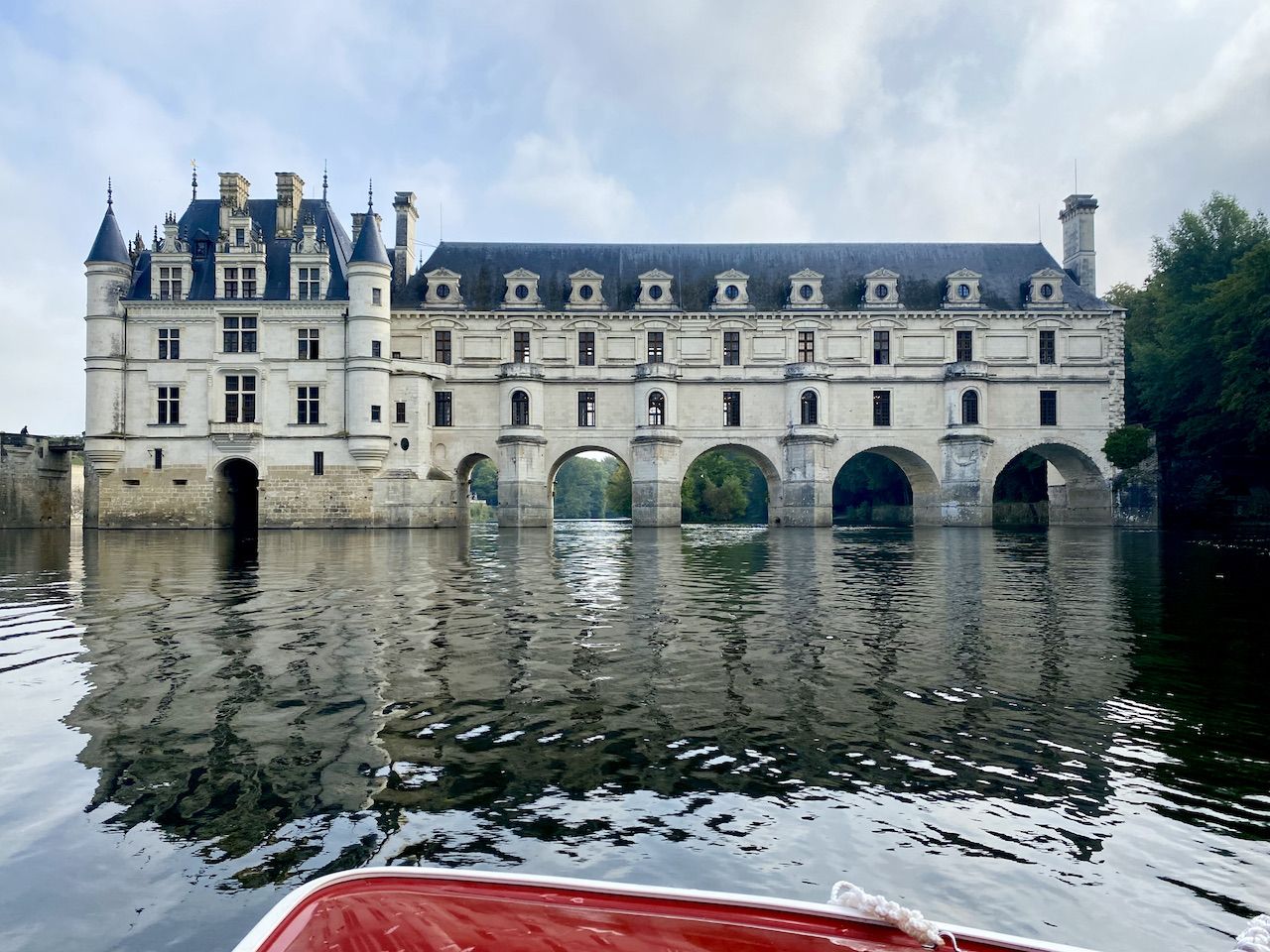
Photo: Noelle Alejandra Salmi
The Château de Chenonceau changed ownership from one very entitled woman to another — from royal mistress to royal spouse to patron of the arts. The feminine touch can be admired in the castle’s elegant architecture and its stunning gardens. When I visited in September, rich purples and white were the garden’s predominant hues, irresistible in their simplicity. What makes the castle most famous, though, may well be its location. Not only did the castle’s bridge over the River Cher help to enrich its occupants, since a toll was charged to all who wanted to pass, but it helped to make it one of the loveliest castles in the Loire Valley. Its beauty was further enhanced after Francis I’s wife, Catherine de Medici, took over the castle from Francis’s mistress and had a two-story gallery added atop the famous bridge.
You can take in the chateau from a different viewpoint than is usually afforded most visitors by renting an electric boat from La Bélandre. No boating license, nor even any boating experience at all, is needed — as long as you listen closely to the directions offered and pay €35 ($40). The boats go at a rather slow speed, returning upriver even more slowly. The electric motor makes for a quiet cruise under the willow trees that is almost poetic, especially when you pass under the castle’s bridge to admire it from the other side. The gentle ride was an unexpected highlight of my Loire visit.
5. Visit a different kind of garden
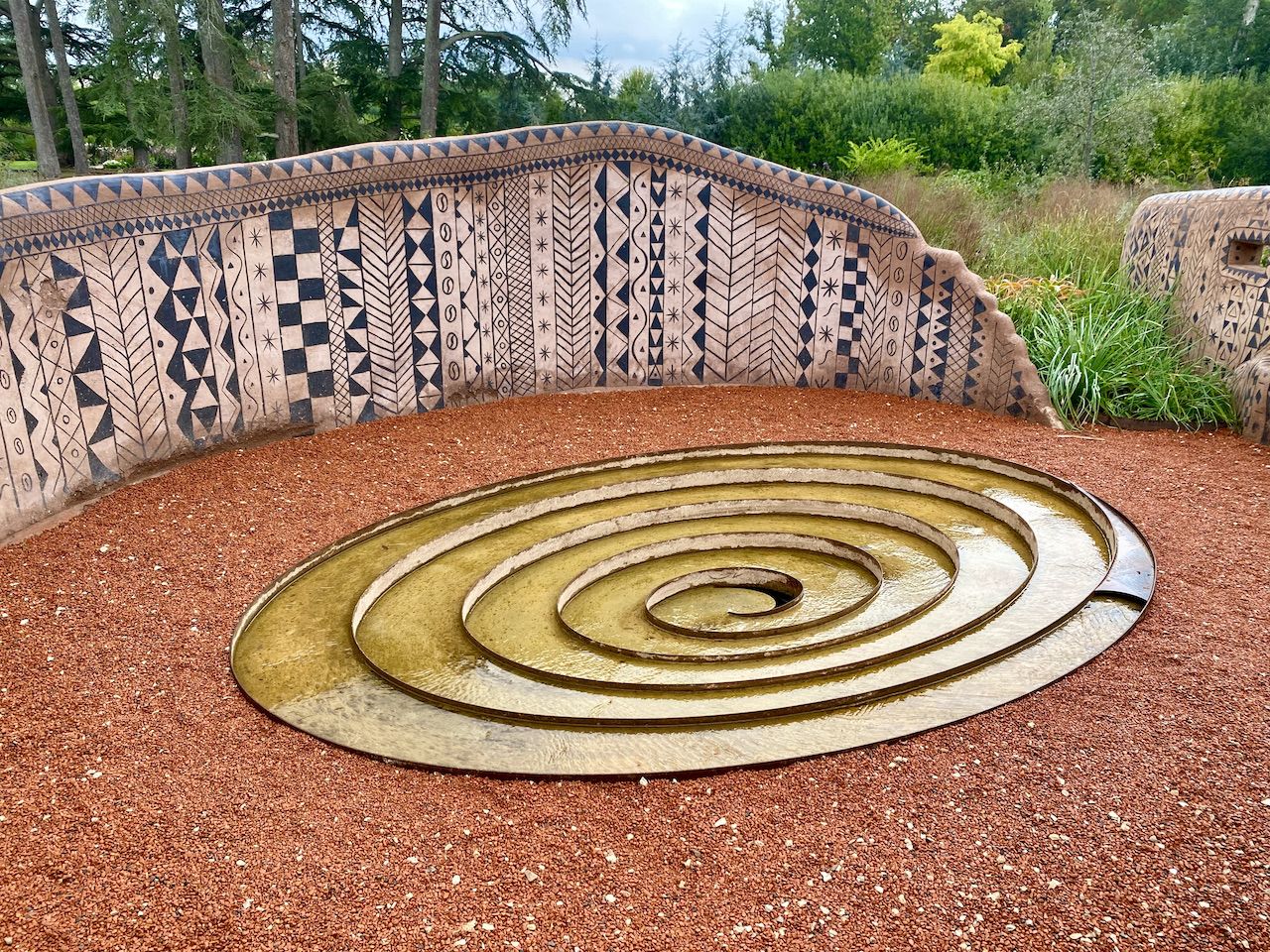
Photo: Noelle Alejandra Salmi
Somehow, the gardens of the Château de Villandry are even more impressive than those of Chenonceau — with vast geometric patterns creating vivid displays made as enthusiastically with flowers as with lettuces and gourds. It’s a gardening triumph that’s very much worth a visit. But that’s almost a given, and it’s bound to be in your itinerary anyway, Matador Network recommend in our piece on the basics of visiting the Loire.
Before you go to Villandry, take an afternoon to check out another sort of garden entirely — that of the Château de Chaumont. Here, the palace’s vast green spaces have been given over to winners of a tough annual competition for which landscape artists and other creative types submit entries. They’re vying for the right to design special gardens on the Chaumont grounds. The 2021 theme was biomimicry, or the way that humans can take inspiration from nature to design something new, and all the winning designs played on that idea.
The resulting gardens were spectacular, with some celebrating the fractals that nature creates, natural irrigation systems that flow around trees or bamboo, or the perfect temperature regulation achieved in giant termite mounds. Using the natural world to teach and inspire was a welcome break from the royal excess of other nonetheless beautiful gardens.
6. Sleep in the canopy in the Loire Valley

Photo: Noelle Alejandra Salmi
The Loire Valley has lodging options to match any type of vacation style and budget. If you want a relaxed stay that focuses on the area’s natural surroundings, then the no-frills cabins of Lodges de Blois Chambord could be what you are looking for. If that won’t quite do it for you, the Manoir de Contres promises a lot of personal charm at an affordable price point. For those who’ve gotten used to the minimalist style of an airbnb, the Manoir is anything but — decorated much as it probably was a hundred years ago. But the charming couple who own and run it add the homey touch you might find at a classic bed & breakfast. There are even castles you can stay in.
At the opposite end of the budget/luxury spectrum from the cabins, you’ll find French countryside elegance at Les Sources de Cheverny, an estate tucked into the woods, complete with a small chateau with lots of living space to entertain and play carom billiards or other parlor games. Also on the grounds are several updated cabins, a pond, horses, indoor and outdoor pools, and a complete spa with treatment rooms. Add to that two unforgettable restaurants, and you have one romantic getaway. If you can get there early in the week, evening rates might only be 170 Euros ($195) per night, while weekend rates can get as high as 700 Euros ($800) nightly.
Or you could throw out the whole spectrum altogether and try something utterly different — an option that combines the best of all of them, tossing together cabins, luxury, and quirkiness. Rather than drawing on France’s royal history, this option celebrates nature and art, as the creator and owner Anne-Caroline Frey was and remains deeply involved in the art world. What she has created on her family’s land is a hideaway of 18 elevated cabins, each hidden away in a stretch of this 750-acre forest, and each with its own feel, decorated by a different artist. Waking up high in the canopy, you feel as if you are in the coziest treehouse every built. Rates start at 270 Euros ($310) per night.